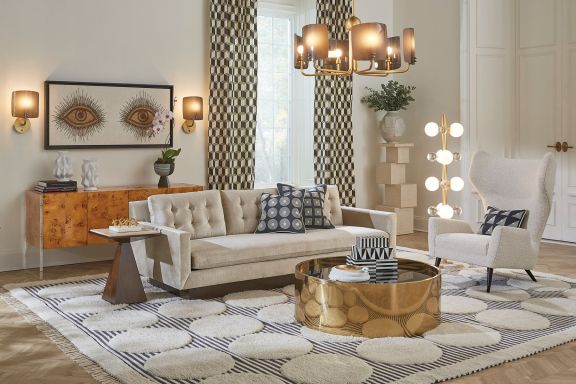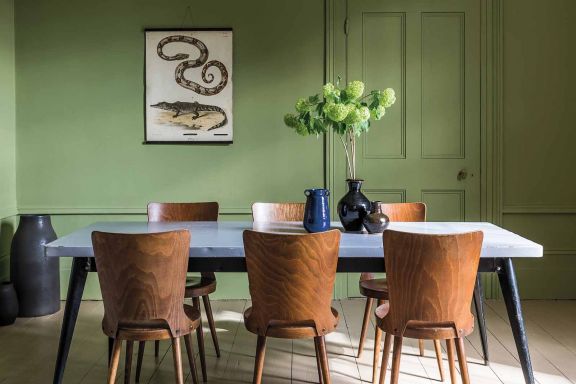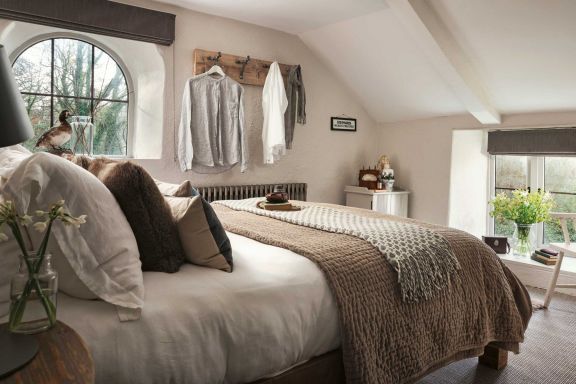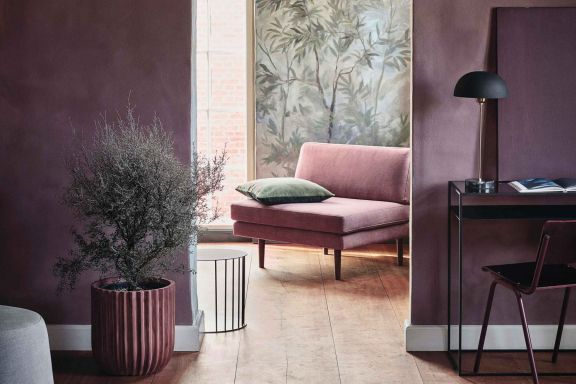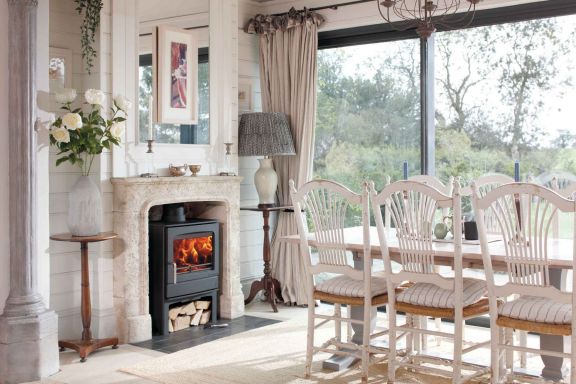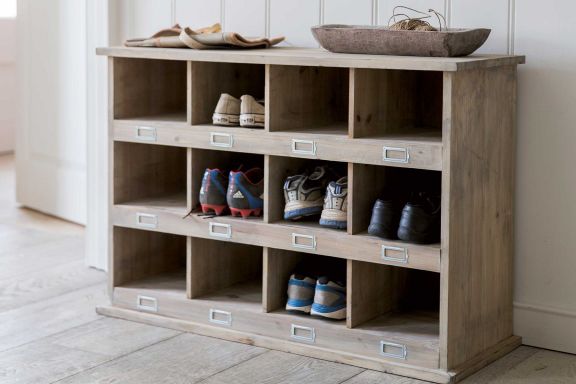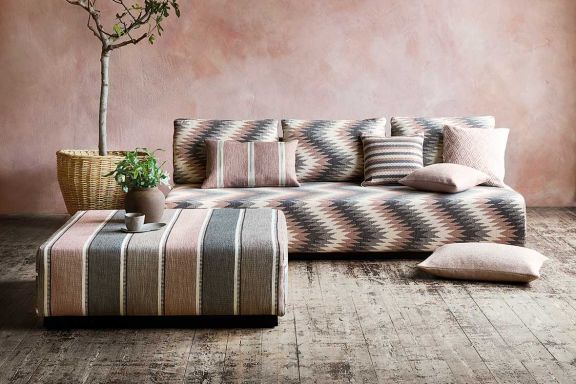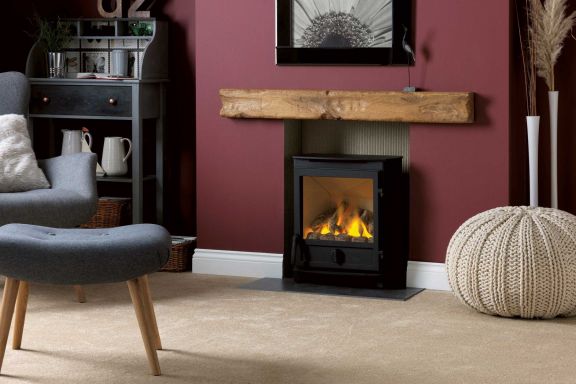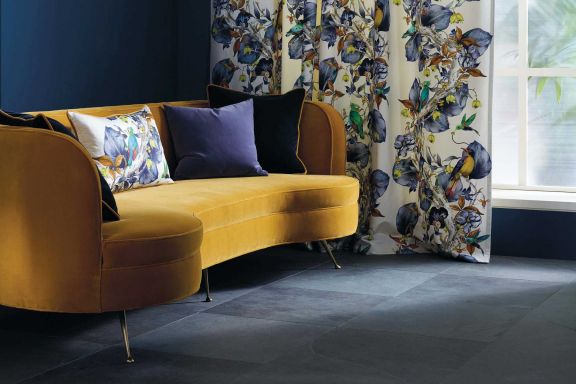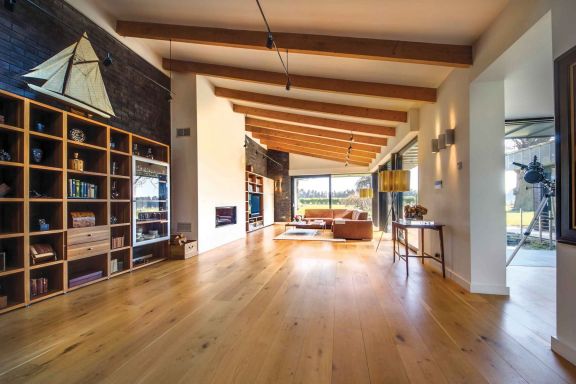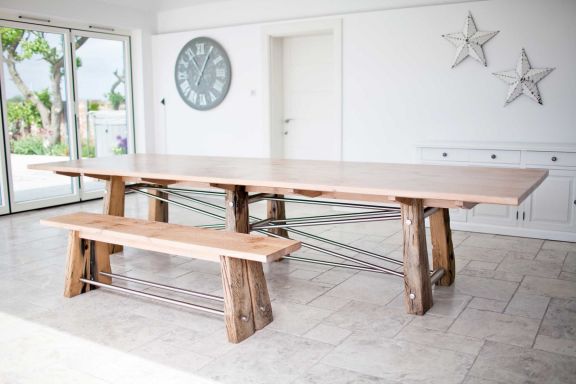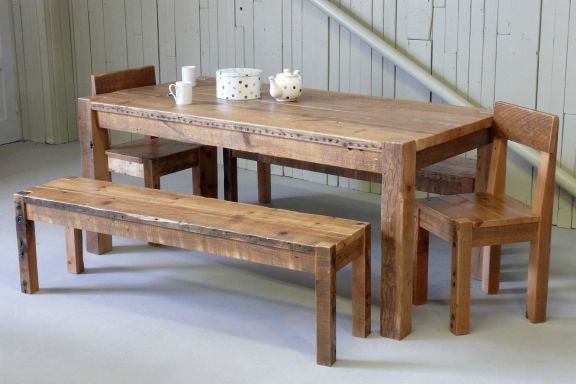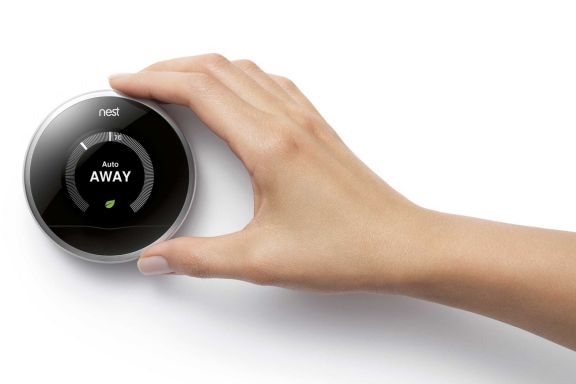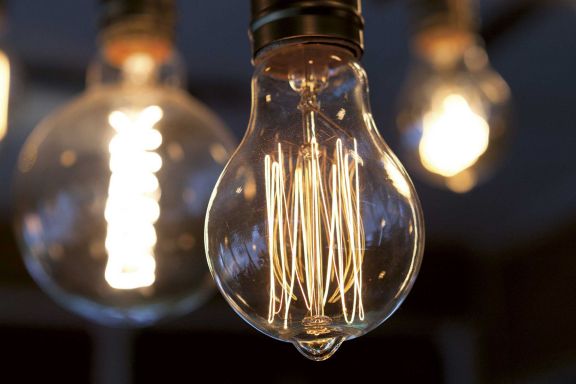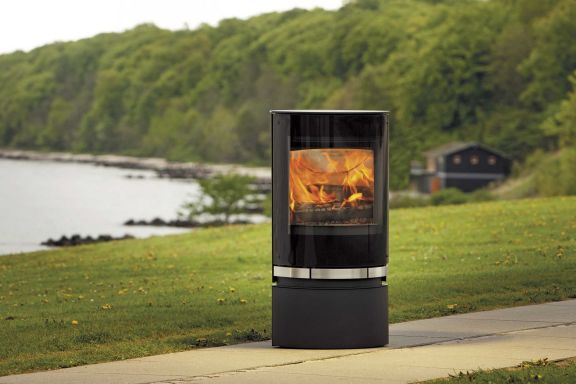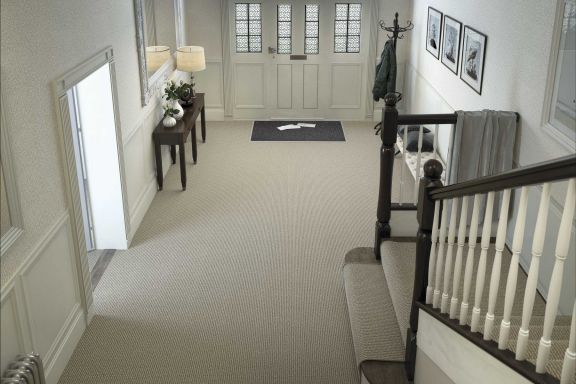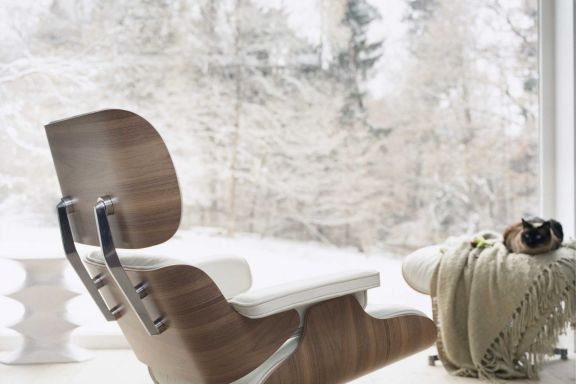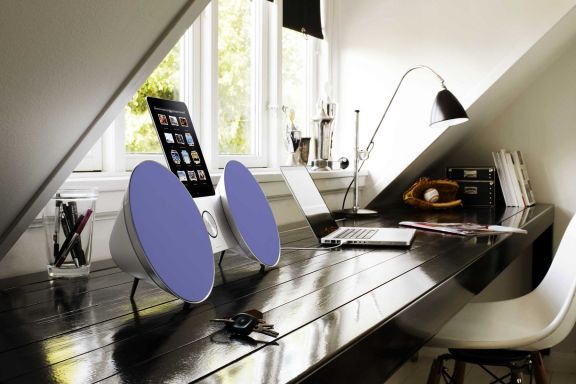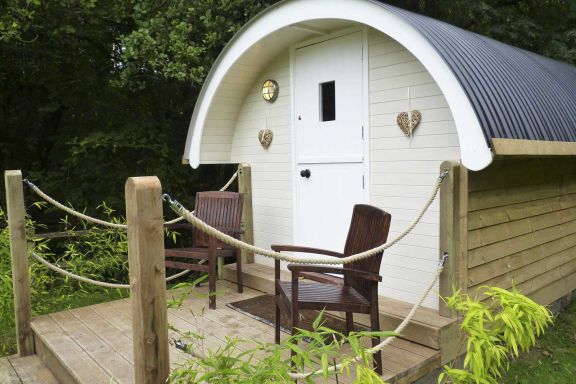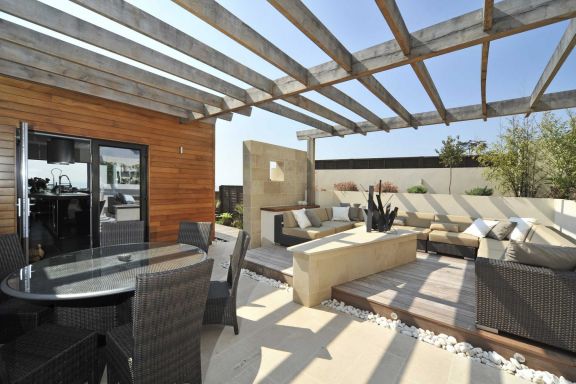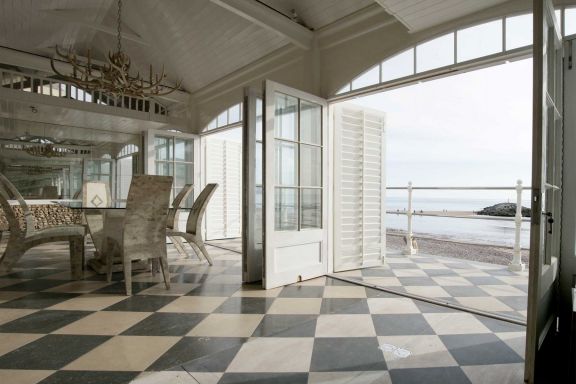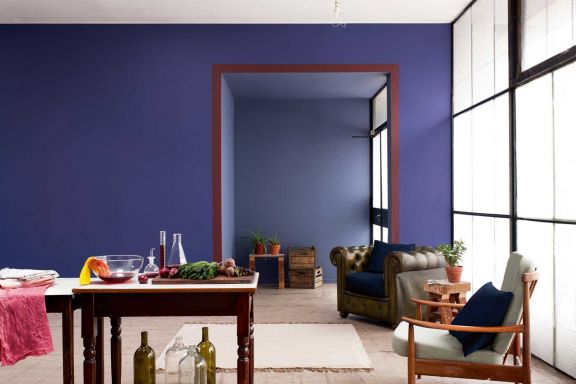
Living Space Feature
See the light!
From pendants and chandeliers to shades and sensors, the styles of lighting are many and varied. Devon Home looks at the latest trends in illumination
Lucy Baker-Kind
1 January 2016
Lighting is there to serve a purpose, but that does not mean it has to be purely functional and utilitarian. Lamps and illuminations have become decorative pieces in their own right, and the style and placement of this vital equipment can either make or break a room’s atmosphere.
Gone are the days of a single hanging bulb in the centre of the room, casting a harsh light over the surroundings. Today there is mood lighting, task lighting, dimmer switches, uplighters and downlights to consider. From speaking to local interior designers and lighting specialists, it is clear that there are plenty of decisions to be made, and certain trends are proving popular.
Cathryn Bishop, Director of Cornish Interiors at the Royal William Yard in Plymouth, assists her customers to light their homes perfectly. “It’s crucial to mix the height of your light fittings and vary the source of light in the room. A good design will always have some overhead general lighting, some soft ambient lighting from floor lamps, table lamps or pendants, and specific task lighting.”
Pendants are a popular choice to light the whole room, and are available in a variety of styles – multi-shade pendants are an effective way of taking light to where you need it from a single position. Cathryn’s advice is to place a pendant over a feature or item of furniture that will not be moved in the future, such as a kitchen island unit or large table. “Pendants often serve a dual purpose – providing light but also acting as a piece of art or sculpture in the space.”
The statement chandelier is still an eye-catching feature, and there are modern takes on the classic. Bright coloured glass or a sculptural pendant can bring the ‘wow’ factor to your decor, or you could source a vintage crystal piece for old-school glamour. Gordon Gurr, Director of Lumination in Barnstaple, believes the choice of chandelier style is determined by the period of the house. “Chandeliers in the true sense of the word, as quality crystal pieces, remain timeless. Classic Czech, Italian and Spanish chandeliers will always have a place in traditional-style properties.”
Richard Taylor, Company Director of Dusk Lighting in Topsham, has seen pendants used as task lighting. “People are placing pendants where they want to make a piece of furniture a focal point. Pendants in the very corner of rooms above armchairs are used as a reading light.”
Gordon finds that his customers are seeking pendants with matching wall lights, to create a uniform look: “… then table lamps, free-standing lamps and reading lamps are used as accessories.”
Table or side lamps are essential to lift a room, and here it is possible to introduce different materials and finishes to create texture and form. Ceramic, glass and wood lamp bases are popular with Cathryn, with a mix of materials meaning the customers don’t have to make a single choice. “We often make bespoke shades for clients, sometimes because they want a more interesting fabric or a particular size. Linen shades are always popular, but it’s nice to ring the changes by lining the shade with a bold contrast colour.”
Richard knows that customers like to have a varied choice when it comes to shades. “One of our manufacturers does a range of bespoke silk shades which are hand-made to order. Again, it is very dependent on the clients’ taste when it comes to shades, but often people just want a very neutral colour.”
A new trend emerging is the use of matt gold in fittings. “’We anticipate more in matt gold over the coming seasons. It will be quite a contrast to the bronze and nickel that we tend to see a lot of,” says Richard.
Side lights in the bedroom have also seen a turnaround in style. The traditional placing of two matching lamps on the bedside tables is not the only option now, and Gordon is seeing requests for different preferences. “We see the primary demand as bedside table lamps with touch control, followed by bedside wall lights which can be adjusted.”
Cathryn has been asked to fit hanging pendants over bedside tables, but it requires thought beforehand. “It’s a great look and keeps the bedside table free! However, proceed with caution, as you won’t be able to change the size of your bed easily once you commit to this!”
One room where lighting tends to take a modern approach is the bathroom, and Cathryn and Richard agree that low-level motion-activated sensor lighting is a great addition to the smallest room in the house. “We highly recommend it as it means if you have to get up in the middle of the night, you won’t have to turn on the main light, which tends to be very harsh,” says Richard.
“When we design a bathroom, we add two circuits of lighting – one for daytime (overhead lights, wall lights by mirrors) and one for evening so you can relax (wall lights, some small downlights in a niche, or under-counter lighting to the vanity unit). It’s much more subtle and relaxing!” says Cathryn.
It’s not just the look of the lighting where decisions have to be made, but also how the lights are controlled. Technical systems that activate different moods and settings are becoming more mainstream, and Cathryn is seeing more customers wanting the hi-tech options. “We use a lot of Lutron switches, which control whole room settings, and the smaller and slimmer the control panel the better.”
White plastic wall switches are a thing of the past, and Cathryn introduces different materials and finishes in these small details. “I’d go for a brushed metal finish on a switch, nothing shiny that shows finger marks. Bronze is a current favourite.”
Despite all the advances in lighting design, the bulb remains the crucial element. LED bulbs are more expensive to purchase initially, but energy costs are lower over the lifespan. However, there are other options, and Richard is seeing a trend in filament light bulbs. “These vintage-style bulbs tend to be chosen when the bulb is on display; they give off a cosy warm light. However, they aren’t as efficient as LEDs. We suggest compromising by using the LED filament bulb – with all the benefits of an LED, it looks far more attractive on display than a standard LED.”
Gordon believes that LED is the way forward. “Some of the latest products which are very stylish and contemporary may be viewed as ahead of their time, but we believe this will be the lighting of the next decade.”
Cathryn agrees: “LED lighting is coming on in leaps and bounds and, with the ability to fit LED into smaller and smaller fittings, the possibilities for lighting are getting really exciting.”
“Vintage-style bulbs tend to be chosen when the bulb is on display”
